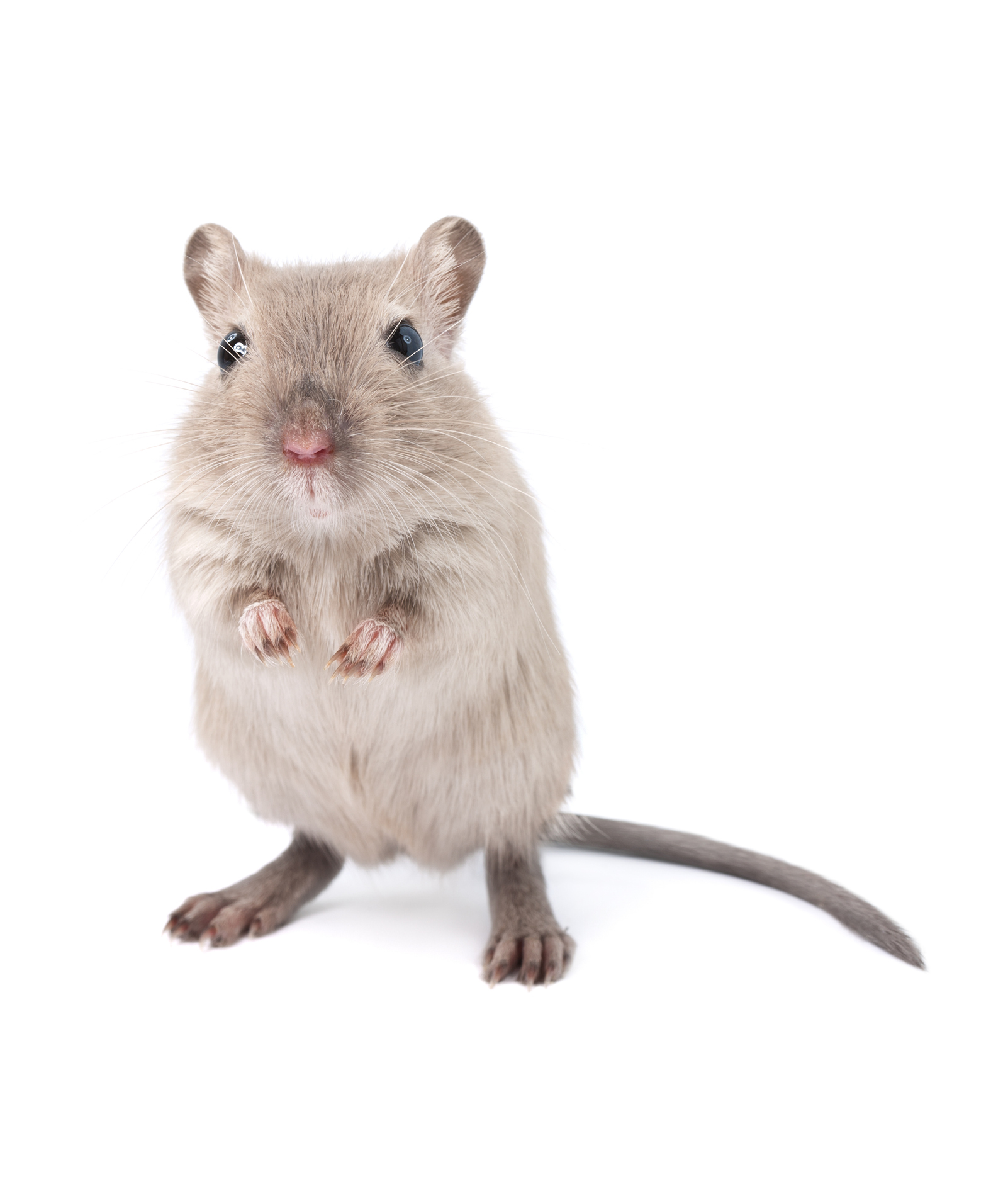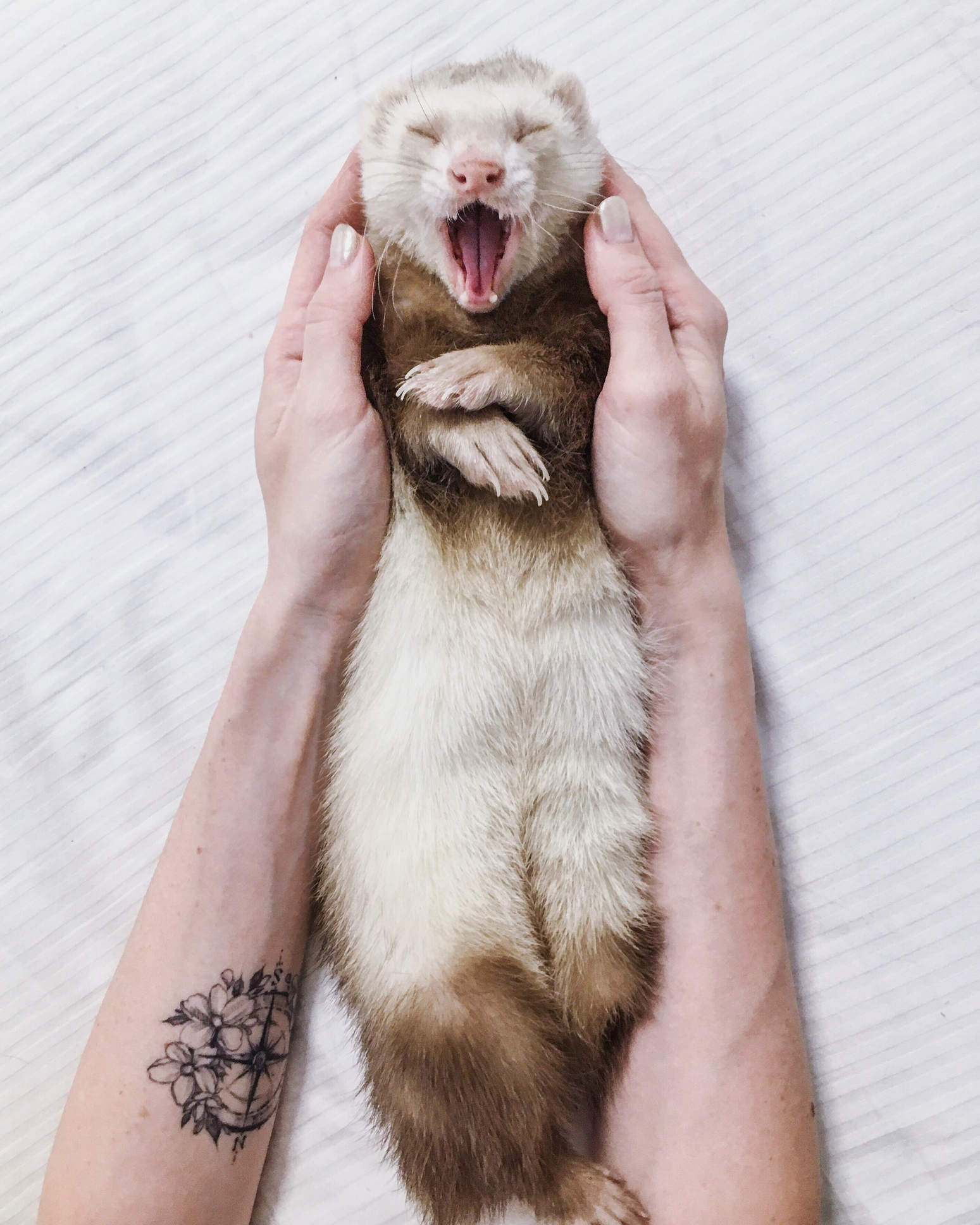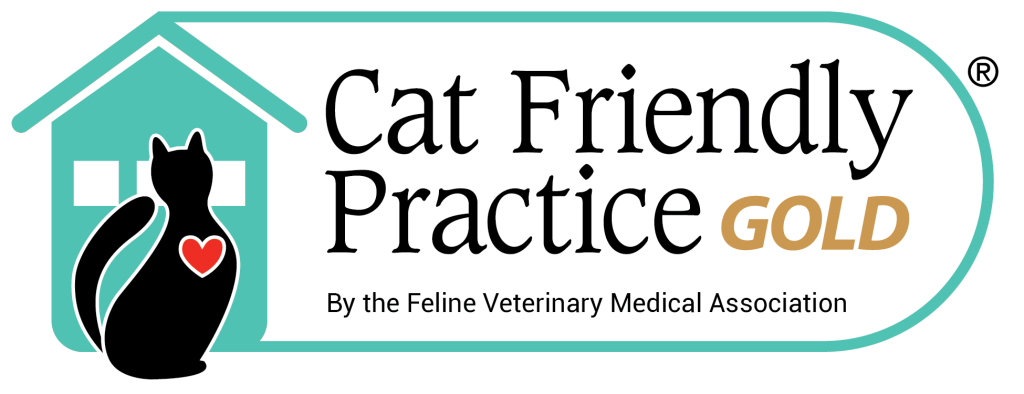We understand the thought of caring for your exotics can be overwhelming! On this page we’ve provided some basic information regarding husbandry (care and housing) of many of the exotic pets we see – including rabbits, guinea pigs, hamster, gerbils, rats & mice, chinchillas, and ferrets. Reptiles, birds, and fish coming soon!
Exotics Husbandry

Rabbits:
- Type of animal: Lagomorph
- Breeds: 47 breeds of rabbits currently recognized in the USA (newest breed is the Lionhead)
- Lifespan: 7-10 years
- Diet: The rabbit diet should be made up of three main types of food: grass hay (provided at all times), pellets (in moderation), and fresh greens (in moderation). Treats include fruits, nuts, and other sweet or fatty treats. These should be used sparingly (less than 10% of the diet). Clean, fresh water should be provided daily. Water can be provided in a water bottle or a bowl.
- Housing: Pet rabbits should be kept inside for the entire year in the southeast. A small cage made of wire with a pull out tray to easily clean is an excellent set-up. Ideal temperature range is 60-70 degrees. Rabbits can be litter box trained very easily since they tend to eliminate in the same area of a cage. For bedding, consider a soft material such as care or wood pellets to help absorb any wet material in the cage. Rabbits should be exercised daily. Dedicate a portion of the house for play. It is important to hide cords and “rabbit proof” the area in order to prevent accidents. A play pen can be made outside for your rabbit which also encourages grazing.
- Veterinary Care: Rabbits should be seen on a yearly basis by your veterinarian. Rabbits that are not intended for breeding should be spayed (female) or neutered (male) between 4-18 months of age. The RHD (Rabbit Hemorrhagic Disease) vaccine is recommended annually for all rabbits.
- Common problems: dental disease, lack of appetite, upper respiratory infections, and fur mites.
For more information: http://www.veterinarypartner.com/Content.plx?P=A&S=0&C=0&A=3015
Guinea Pigs:
- Type of animal: Rodent
- Breeds: 13 breeds of guinea pigs currently recognized in the USA
- Lifespan: 4-5 years
- Diet: The guinea pig diet should be made up of three main types of food: grass hay (provided at all times), pellets (in moderation), and fresh greens (in moderation). Treats include fruits, nuts, and other sweet or fatty treats. These should be used sparingly (less than 10% of the diet). Clean, fresh water should be provided daily. Water can be provided in a water bottle or a bowl. Guinea pigs cannot produce vitamin C and it must be supplemented in their food daily. Sources include kale, collard greens, mustard greens, apples, sweet peppers, parsley, and broccoli.
- Housing: Pet guinea pigs should be kept inside for the entire year in the southeast. A small cage made of wire with a pull out tray to easily clean is an excellent set-up. Ideal temperature range is 60-70 degrees. For bedding, consider a soft material such as care or wood pellets to help absorb any wet material in the cage. Provide plenty of toys and enrichment for a guinea pig to play with and hide in. A play pen can be made outside for your guinea pigs which also encourages grazing.
- Veterinary Care: Guinea pigs should be seen on a yearly basis by your veterinarian. There are no vaccines currently recommended for guinea pigs.
- Common problems: lack of vitamin C (scurvy), fur mites, ovarian cysts, and lack of appetite.
For more information: http://www.veterinarypartner.com/Content.plx?P=A&S=0&C=0&A=684


Hamsters
- Type of animal: Rodent
- Species: The most common species are Syrian, Winter White, Campbell’s Russian, Robo, and Chinese.
- Lifespan: 2-3 years
- Diet: The hamster diet should be made up of mostly pelleted hamster food. Avoid pellets that have a large amount of nuts or seeds in them. Fresh vegetables can be given in small amounts. Treats include fruits, nuts, unsweetened cereals, and other sweet or fatty treats. These should be used sparingly (less than 10% of the diet). Clean, fresh water should be provided daily via a sipper bottle.
- Housing: Pet hamsters can be easily kept in plastic and/or metal cages. Plastic cages tend to be elaborate with multiple tunnels and rooms to explore. Use a bedding such as care fresh, shredded paper, or corn cob pellets. An exercise wheel is an excellent way to provide enrichment for your hamster. Make sure you clean the cage at least once per week.
- Veterinary Care: Hamsters should be seen on a yearly basis by your veterinarian. There are no vaccines currently recommended for hamsters.
- Common problems: old age, tumors (cancer), cheek pouch impaction, wet tail (diarrhea).
For more information: http://www.veterinarypartner.com/Content.plx?P=A&S=0&C=0&A=679
Gerbils:
- Type of animal: Rodent
- Species: The most common species are Mongolian and Fat-Tailed.
- Lifespan: 5-7 years
- Diet: The hamster diet should be made up of mostly pelleted gerbil food. Avoid pellets that have a large amount of nuts or seeds in them. Your gerbil will pick out all of the seeds and ignore the rest of the food. Provide a small amount of fresh grass hay daily. Treats include fruits, nuts, vegetables, unsweetened cereals, and other sweet or fatty treats. These should be used sparingly (less than 10% of the diet). Clean, fresh water should be provided daily via a sipper bottle.
- Housing: A small 5-10 gallon glass aquarium is sufficient for housing provided there is a mesh or solid top to prevent your gerbil from escaping. Choose a non scented, fluffy bedding such as care fresh and make sure it is 2-3 inches deep. A small sand bath should be placed in the corner of the cage so your gerbil can regularly clean itself. Enrichment items are important and include toys and houses that they can hide under as well as abundant items that they can chew on.
- Veterinary Care: Gerbils should be seen on a yearly basis by your veterinarian. There are no vaccines currently recommended for gerbils.
- Common problems: nasal dermatitis, seizures, oral tumors (cancer), tail loss (do not pick your gerbil up by the tail!)
For more information: http://www.veterinarypartner.com/Content.plx?P=A&S=0&C=0&A=682


Rats & Mice:
- Type of animal: Rodent
- Varieties:
- Rat: Standard, Rex, Tailless, Hairless, Satin, & Dumb
- Mice: Standard, Satin, Long Hair, Long Hair Satin, Frizzie, Frizzie Satin, Hairless
- Lifespan: 2-3 years in rats, 1-2 years in mice
- Diet: Rats and mice should be provided a commercially prepared pellet or block diet. These are well balanced in nutrients. Treats include fruits, nuts, vegetables, unsweetened cereals, and other sweet or fatty treats. These should be used sparingly (less than 10% of the diet). Clean, fresh water should be provided daily via a sipper bottle.
- Housing: Enclosures for rats and mice should be a solid bottom cage with soft bedding. Avoid thin plastic or wood since they like to chew and can easily eat through these linings. Consider a low residue bedding such as corn cob, shredded paper, or care fresh. Enrichment in the cage includes a wheel, places to hide, and blocks to chew on. Clean the cage once a week
- Veterinary Care: Rats and mice should be seen on a yearly basis by your veterinarian. There are no vaccines currently recommended for rats or mice.
- Common problems: upper respiratory infections, fur mites, obesity (rats), oral tumors (cancer)
For more information: http://www.veterinarypartner.com/Content.plx?P=A&S=0&C=0&A=660
Chinchilla:
- Type of animal: Rodent
- Lifespan: 10-15 years
- Diet: Commercial pelleted chinchilla feed is usually available at a local pet store. If you’re having trouble finding this, consider rabbit or guinea pig pellets. Grass hay should be provided daily. Treats include fruits, nuts, vegetables, unsweetened cereals, and other sweet or fatty treats. These should be used sparingly (less than 10% of the diet). Clean, fresh water should be provided daily via a sipper bottle.
- Housing: Most chinchillas do well with a wire mesh cage. The bottom can be solid or wire bottom. An ideal cage has multiple levels since they are acrobatic animals. A dust bath should be provided at least twice a week. Use commercial sand designed for dust baths. They should always be kept inside.
- Veterinary Care: Chinchillas should be seen on a yearly basis by your veterinarian. There are no vaccines currently recommended for chinchillas.
- Common problems: upper respiratory infections, intestinal diseases, ringworm.
For more information: http://www.veterinarypartner.com/Content.plx?P=A&S=0&C=0&A=666


Ferrets:
- Type of animal: Mustelidae (a relative of the weasel)
- Lifespan: 5-7 years
- Diet: Ferrets are obligate carnivores which means they must eat a meat based diet. Commercially available ferret chow is readily available. Alternatively, you can use regular dry kitten food for food. Treats should be used sparingly and include cat treats and ferret treats. Clean, fresh water should be provided daily via a sipper bottle.
-Housing: Elaborate ferret “condos” are now available and specifically designed for a ferrets active, climbing lifestyle. The cages are generally several feet long and have multiple levels. There is a solid bottom. Ferrets can be easily litter trained. Use care fresh or pelleted newspaper as the litter liner. Provide hammocks for your ferret to lounge and sleep in. Plenty of plush bedding should be provided for your ferret to rest on. Avoid small, rubber toys since ferrets will readily swallow these. Provide 1-2 hours of exercise outside of the cage in a ferret proof area of your house.
- Veterinary Care: Ferrets should be seen on a yearly basis by your veterinarian. We recommend that all ferrets are vaccinated for the rabies virus once a year. Because vaccine reactions are common in ferrets, we pre-medicate all of our ferrets with diphenhydramine (Benadryl) prior to administration. Ferret distemper is another vaccine that can be administered to your ferret based on his or her lifestyle.
- Common problems: adrenal gland disease, insulinoma (pancreatic cancer), foreign bodies
For more information: http://www.veterinarypartner.com/Content.plx?P=A&S=0&C=0&A=2774




